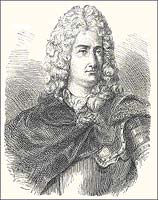By Marc Merlin (Atlanta Science Tavern)
“Positive” and “negative.” These two words associated with everything electrical seem so natural to us that it is surprising to recall that at some point in time they had to have been invented.
Their invention began with Charles François de Cisternay du Fay, a French chemist and superintendent of the Jardin du Roi, who reported in the Philosophical Transactions of the Royal Society in December 1733 the discovery of a “universal and remarkable” principle that “casts a new Light on the Subject of Electricity,” namely “… that there are two distinct Electricities, very different from one another; one I call vitreous Electricity; the other resinous Electricity.”
Du Fay assigned the name vitreous to the type of electricity exhibited by materials like glass and resinous to the type exhibited by those like copal (tree resin) according to patterns of electrical attraction and repulsion that he observed between such substances.
Not much more than a dozen years passed before William Watson and Benjamin Franklin independently recognized that du Fay’s “electricities” could be explained as a surplus or a deficiency of what we now call electrical charge, and so came about the names we use, positive for du Fay’s vitreous electricity and negative for his resinous one.
More than merely an advance in the electrical studies of the age, du Fay’s discovery represents a profound first scientific realization, one which foreshadows the through-the-looking-glass world of quantum physics two centuries later. And that is that the objects of nature possess latent properties for which entries are not to be found in the lexicon of sensory experience; and that to have dominion over such things, like Adam over the animals created in Genesis, we are obliged to give them names.
Marc Merlin had aspired once to be a physicist, has worked mostly as a computer programmer and is now happily ensconced as the organizer of the Atlanta Science Tavern. A longer discussion of the theme of this post can be found in his essay, The Physics of Silly Names.

